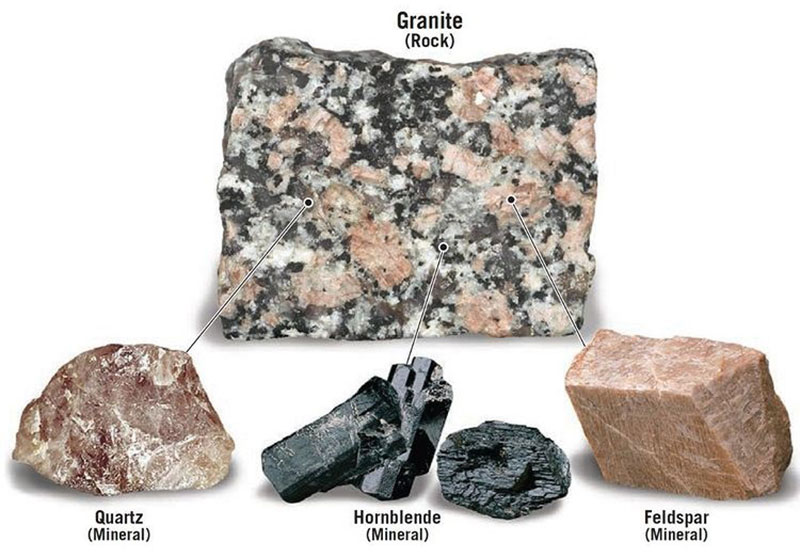
When exploring the mysteries of geology, people often encounter the terms “rock” and “mineral.” Many people consider these terms interchangeable, but in fact, rocks and minerals are distinct entities with unique characteristics and formation processes. So, let’s delve into the fascinating world of rocks and minerals, uncovering their differences and similarities.
1. Different origins and formation processes
Rock
Rocks are composed of minerals or mineraloids naturally aggregated together. They are formed through a series of geological processes, beginning with the rock cycle. This cycle includes three main types of rocks: igneous rocks, sedimentary rocks, and metamorphic rocks. Igneous rocks originate from molten magma, which can either cool beneath the Earth’s surface (intrusive rocks) or solidify on the Earth’s surface (extrusive rocks). Sedimentary rocks are formed by the accumulation and compaction of sediments. Metamorphic rocks refer to previously existing rocks that have undergone metamorphism due to high temperatures and pressures.
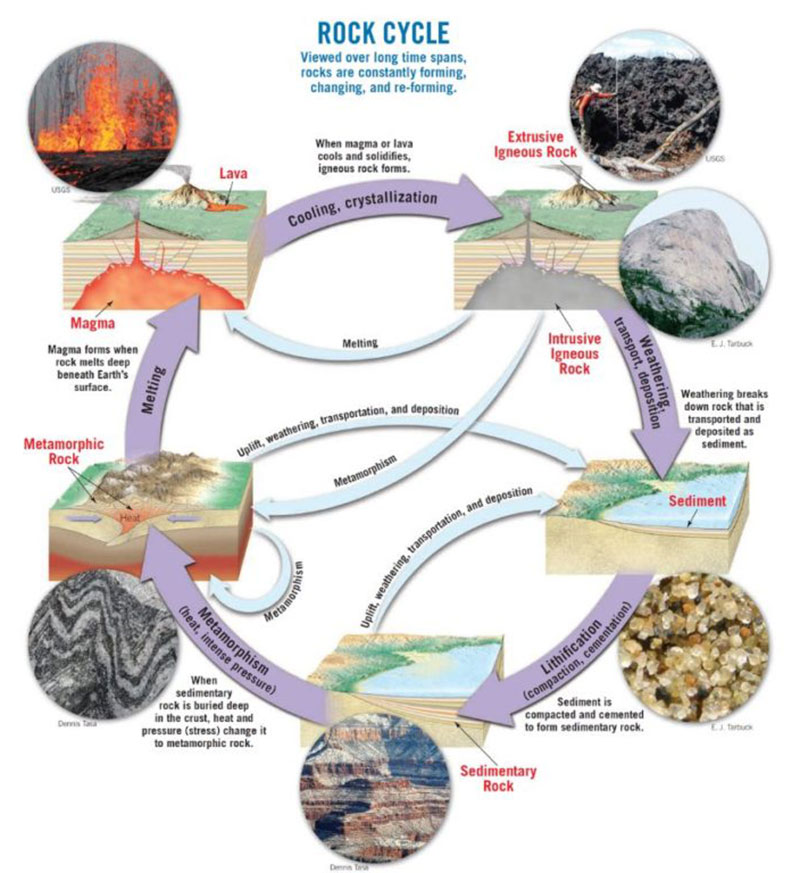
Mineral
Minerals are naturally occurring inorganic substances with a defined chemical composition and ordered atomic structure. They are formed through various geological processes, including crystallization from magma or solutions, precipitation from aqueous solutions, and metamorphic transformations. Minerals can form under a wide range of conditions, from high temperatures in volcanic environments to quiet environments deep within the Earth’s crust.
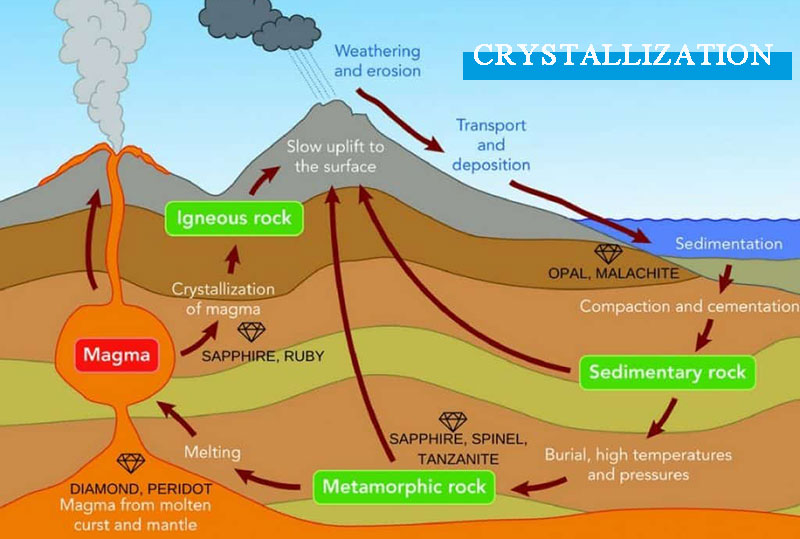
2. Composition
Rock
Rocks are composed of minerals or mineral-like substances. The composition of a rock depends on the minerals present within it. Some rocks may consist of a single mineral, while others may contain multiple minerals. For example, granite is primarily composed of quartz, feldspar, and mica, while basalt is mainly composed of plagioclase feldspar and pyroxene.
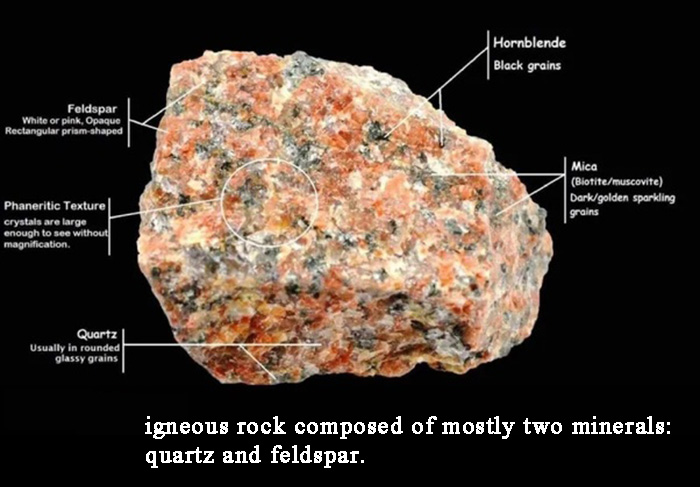
Mineral
Minerals are compounds of elements with specific chemical formulas. They are the basic building blocks of rocks and can be identified based on their unique physical and chemical properties. Some common minerals include quartz, feldspar, mica, calcite, and hematite, each with its own distinctive characteristics.
3. Physical characteristics
Rock
The physical characteristics of rocks vary depending on their type and formation process. Hardness, texture, color, and appearance are some common features used to identify rocks. For example, igneous rocks are often hard and have interlocking mineral grains, while sedimentary rocks typically exhibit visible layers or bedding structures.
Mineral
Minerals possess a range of specific physical properties that aid in their identification. Cleavage, hardness, luster, streak, and crystal form are key characteristics used by geologists and mineralogists to distinguish minerals. For example, diamonds are renowned for their exceptional hardness, while talc is known for its softness.
Physical properties of common minerals
| Hardness | Color | Cleavage | Other | Mineral Name |
|---|---|---|---|---|
| 1-2 | Colorless | One plane | “Chewy” | Clays |
| 2-2.5 | Colorless, light tan, yellow | One plane | Can be peeled into transparent, flexible sheets | Muscovite |
| 2-2.5 | Brown, black, green | One plane | Can be peeled into thin, flexible sheets | Biotite |
| 2.5 | Colorless, white | Three directions at 90° | Cubic crystals, salty taste | Halite |
| 3 | Colorless, white | Three directions not at 90° | Rhombic crystals, reacts with HCl, double refraction | Calcite |
| 5-6 | Dark green to black | Two directions at ~60° and ~120° | Elongated crystals | Hornblende (Amphibole) |
| 5-6 | Dark green to black | Two directions at ~90° | Elongated crystals | Augite (Pyroxene) |
| 6 | Colorless, pink, gray | Two directions at 90° | Stubby, prismatic crystals | Potassium Feldspar |
| 6 | Colorless, white, gray, black | Two directions at 90° | Can have small grooves on one of the cleavages called striations | Plagioclase Feldspar |
| 6.5-7 | Green | No cleavage, can have conchoidal fracture | Stubby crystals or granular masses | Olivine |
| 7 | Mainly red and black | Conchoidal fracture | May occur in 12-sided, circular crystals | Garnet |
| 7 | Varied | Conchoidal fracture | May occur in six-sided, elongated crystals | Quartz |
4. Chemical characteristics
Rock
Chemically, rocks are primarily composed of minerals formed from various elemental compounds. These elements include silicon, oxygen, aluminum, iron, calcium, sodium, and others. The chemical composition of a rock determines its classification and behavior under different conditions.
Mineral
Minerals have unique chemical compositions that distinguish them from other minerals. For example, quartz is composed of silicon and oxygen (SiO2), while calcite is composed of calcium, carbon, and oxygen (CaCO3). These chemical properties play a crucial role in the formation and transformation of minerals over geological time scales.
5. Geological classification
Rock
As mentioned, rocks are classified into three main types based on their formation processes: igneous rocks, sedimentary rocks, and metamorphic rocks. Igneous rocks are further classified based on their mineral composition, texture, and cooling rate. Sedimentary rocks are classified based on grain size, composition, and origin. Metamorphic rocks are grouped based on the degree of metamorphism and parent rock.
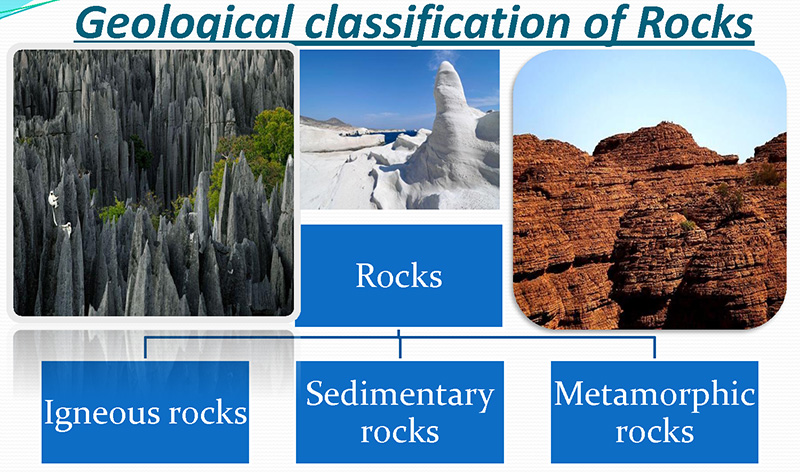
Mineral
Minerals are classified into different categories based on their chemical composition and crystal structure. There are several mineral categories, including silicates, carbonates, sulfates, halides, and oxides. Within each category, various minerals exhibit unique characteristics and properties.
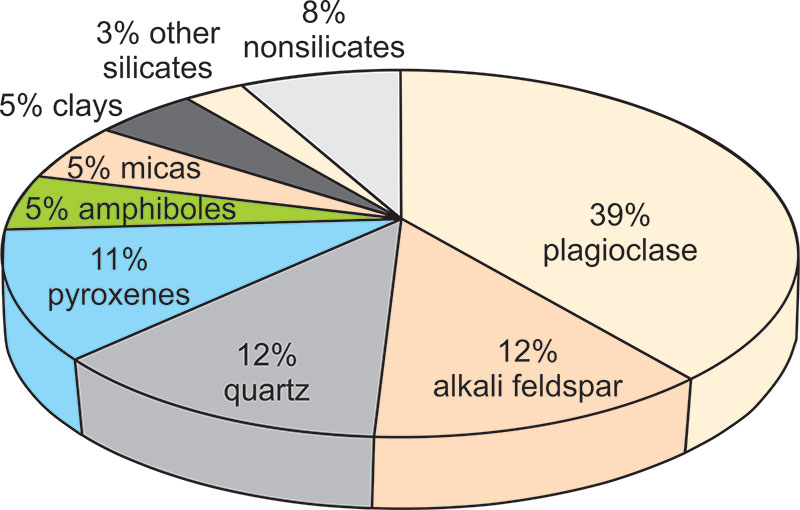
Common minerals in the crust
Comparison for more
The table
| Rock | Mineral | |
| Chemical composition | Does not have a definite chemical composition | Has a definite chemical composition; minerals are inorganic compounds. |
| Examples | Limestone, Basalt, Coal, Claystone | Gold, silver, fluoride etc. |
| Study | Petrology | Mineralogy |
| Function in biology | Shelter and foundation | Minerals help in bone and tooth formation, blood coagulation and muscle contraction. |
| Color | color is not the same | color is usually the same |
| Nutritional requirement for the human body | Little to none | Only some minerals are required by the human body for nutrition. |
| Shape | no definite shape | Usually have a shape |
| Fossil | Some have fossils | No fossils |
What we shall know and do
Rocks and minerals constitute the fundamental components of our planet. Understanding their differences, formation processes, and characteristics is crucial for comprehending the geological history of the Earth and its impact on human civilization. From the igneous rocks produced by volcanic eruptions to the formation of sedimentary rocks, capturing fragments of ancient life, and the transformative power of metamorphic processes, every aspect of rocks and minerals has a story to tell.
The identification and utilization of rocks and minerals have far-reaching implications, ranging from practical applications in construction and technology to the aesthetic value of gemstones and collectibles. However, we need to balance our reliance on these valuable resources with sustainable practices to protect the environment and ensure their availability for future generations.
The world of rocks and minerals offers a fascinating journey through time, revealing the secrets of our ever-changing planet. Let us continue to explore, learn, and preserve these natural wonders for the benefit of all life on Earth.




